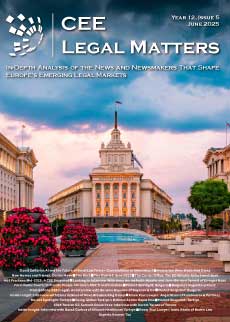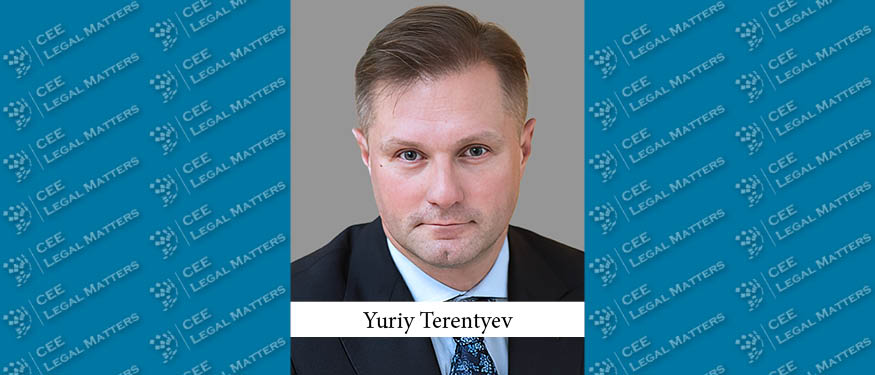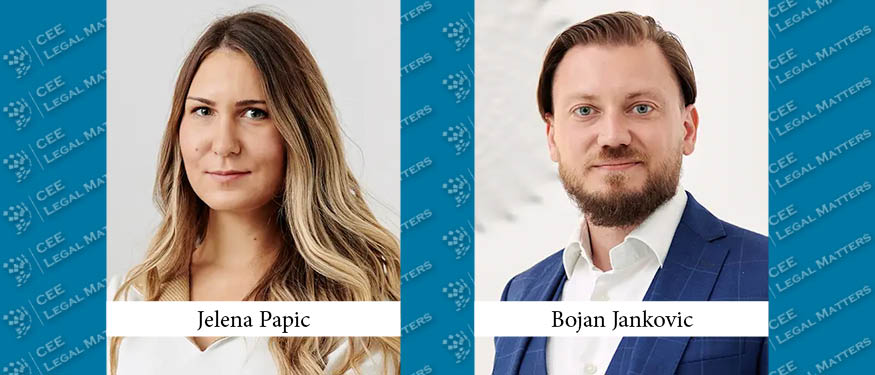Hungary’s Danubia Patent and Law Office traces its roots back almost three quarters of a century. Danubia Partners Eszter Szakacs and Zsofia Klauber explain how the firm has managed to stay on top of the market for so long, through significant periods of technological, political, legal, and historical transformation in the country and culture around it.
CEELM: Danubia has a long history. Can you tell us when the firm was set up and how it has evolved through the years?
Eszter: Danubia was founded in 1949 as a state-owned company primarily by patent agents with the main purpose in the beginning of helping mostly the innovative domestic Hungarian companies who wished to enter foreign markets with their products. After the change in the political regime in Hungary in 1989, it was privatized by some of the patent and trademark attorneys who worked here (many who whom still do). From then on, a different era began. The classic patent and trademark filing services expanded into something that was better focused on looking at ventures and companies coming to the Hungarian market, and offering a more holistic approach – not just to offer prosecution services but really understand what IP the given company had, what its aims were, and the potential of the market and to help the entities optimize their IP portfolio accordingly. This change in approach led to the expansion of the firm’s portfolio and the creation of Danubia IP, which mostly deals with intellectual property management, and to Danubia Legal, which offers legal services provided by specialized IP lawyers. So this is how it evolved from Danubia Patent and Trademark Office into the three-pillar structure it has today and which is unique in the Hungarian market in terms of providing these umbrella-type services.
CEELM: Tell us about the firm now. How big is it? What drives that growth?
Zsofia: The big change of course was the privatization, and in the last 30 years we have grown continuously. Since then, of course, competition has grown much greater. One can say it was a smart move to preserve the institutional know-how and expertise in the field when they turned the firm into a private company. It has always been important for the firm to maintain its reputation as a leading intellectual property firm in Hungary.
We now have 20-25 patent and trademark attorneys, four partner attorneys at law at Danubia Legal, and five associate lawyers. All in all, together with the paralegals and finance department, there are about 80 of us.
CEELM: Why do IP firms have such relatively large headcounts compared to traditional law firms – even those with IP departments?
Eszter: The patent field requires patent attorneys with different technical backgrounds (and in fact Danubia has more than one person for every technical field due to the workload). In addition, in this field professionals – patent agents and lawyers equally – have to take in a lot of technical information and legal history. Patent litigation files can be massive. There is a demand in terms of human resources to deal with all that. And especially in the area of IP, the field is getting more and more complex.
Zsofia: The other thing is that once a firm like Danubia establishes a leading market position, obviously more and more cases come. And that requires growth as well.
If we look at it from a client perspective, our clients come from all sectors of industry: Pharma, IT, Fashion, Entertainment, Food & Beverages, and so on. We assist our clients from the very beginning, when they first step into the market. We work with them not only to find both the company’s name and the brand, and we assist them in obtaining, maintaining, and enforcing IP rights, and this requires a lot of people.
CEELM: What’s the main profile of your clients?
Eszter: It depends on which field you’re looking at. One key portfolio aspect is the litigation work we do for foreign clients in Hungary in the field of IP. There, what we are very impressive in is handling very complex patent litigation matters for clients, specifically litigation that takes place in several jurisdictions in Europe. Very often we act as part of an international team, coordinating the same matter. I think if you look at the rankings, where Danubia is mentioned, it is often mentioned as being known for working on high-profile patent litigation matters – infringement and revocation – for large foreign companies, either on the side of the patentee or its opponents.
Zsofia: Another type of service is where we work for domestic clients – it can be litigation, the same way – but also helping them establish a contractual background for their innovative product or service which they launch, either in the Hungarian market or outside its borders. As a side note, I need to mention that the patent attorneys of Danubia are European patent attorneys as well, which means that they can proceed before the European Patent Office as well. So there is also a strong basis in domestic clients as well.
CEELM: Do you find that clients are now sufficiently aware of what protections they need, or do you still find the need to educate the market?
Zsofia: It depends on the size. Usually, bigger clients are more aware of the importance of IP, but there is often a need to convey the importance and pitfalls of IP to start-ups and IT companies, as they often do not have enough knowledge and awareness of potential IP conflicts on the market.
CEELM: How do you reach potential start-up clients to educate them?
Eszter: They often come to us, because of the reputation Danubia has on the market. We need to talk through what technology they have and what they want to do with it in order to learn about their IP needs and processes. The technical knowledge of Danubia’s patent attorneys is very important here. You need a technical background to determine if that specific technology is capable of being protected by a patent, and then you need both legal knowledge and a very business-minded approach to decide strategically how to proceed. Of course, clients also need to realize that obtaining IP protection and taking care of their intellectual property requires a financial commitment as well – it’s something they have to invest in.
CEELM: What kind of financial commitment?
Zsofia: Obtaining IP costs money. When you factor in the need to obtain the necessary intellectual property protection not only in Hungary but also in multiple other markets, the costs can get quite high – and you have to maintain those protections as well, so it’s not just a one-time spend. And the more complex technology you have and the more versatile the protection you seek, the more it costs. It really makes it worth your time to consult with a professional, because there are situations where it might not serve the client’s best interests to have an overreaching protection, when there is in fact a more sophisticated approach. Ultimately, we are required to understand what the client wishes to do on the market in order to help provide them with a tailor-made IP portfolio.
CEELM: You said the work is becoming more complex. How so?
Eszter: Let me limit myself to what I actually do, as that’s what I know best. As an attorney-at-law, I’m involved mostly with multi-jurisdictional patent litigation. Legal disputes are becoming more and more multi-jurisdictional, and the amount of information we’re dealing with is growing and becoming more complex – and the market goals of clients (because they are involved in multiple jurisdictions) are becoming more sophisticated, so we have to be very sensitive to those. We have to be able to react quickly and provide our services to work out a Hungarian litigation strategy, for instance, and implement it at a high level of quality, often under time-pressure.
CEELM: Is Danubia a member of professional associations or networks with firms in other countries?
Zsofia: This is of course an important part of our every-day business so we are of course present at most IP conferences and associations, such as the INTA, ECTA, MARQUES, AIPPI, LESI, and EPLAW, and everyone in the management of Danubia as well as Danubia Legal partners holds positions in several professional associations. Besides the networking aspects these involvements and commitments help us stay up to date with relevant trends and developments in the field and ensure that our service keeps up with the standards of major European patent attorney and law firms.
Because the UK is an important place in terms of patent litigation we have many contacts with UK lawyers and law firms. The same goes with German locations, which are equally important, such as Munich and Dusseldorf. But otherwise I wouldn’t emphasize specific geographical areas. Ultimately, we get referrals from all over the world, including of course other countries from CEE, and I am very often contacted to reach out to lawyers in Romania or Poland, and of course we have contacts there too.
CEELM: What are some projects in the last five years that you are most proud of?
Eszter: We managed to obtain a significant victory for Pfizer in Hungary regarding its patent for Viagra. This was an excellent example of how effectively to protect a patent by effective judicial measures. That required a lot of preparation and very hands-on handling of that matter. It was an example where we really thought through the strategy with the client from the very beginning, and that strategy played out very well. Ultimately, the process was really long and with unimaginable complexities – it went up to the Supreme Court twice, and in the end it was a success. It even involved legal questions that influenced cases afterwards. It really moved Hungarian judicial practice in patent litigation forward, set precedents, changing legal and judicial practice. It was long – it started in 2012 with a preliminary injunction – and the end of the revocation was last year.
We are also very proud of our work on two cases that went to the CJEU and ended with a favorable ruling, both in the field of pharmaceuticals, one being C-492/16 (Incyte) and the other C-688/16 (Bayer). Obviously, these cases affect patent litigation well beyond Hungary and it is a great honor for us to be involved in them.
Zsofia: We are also proud of our work for a German company, Green Dot. The importance is that it was going on in multiple jurisdictions, and the victory was that we were able to maintain the client’s rights, when a third party tried to cancel the client’s very famous and widely-used trademark. Because of our work, Hungary was one of the few jurisdictions in which the trademark was preserved, in fact, so we were very proud of our work here.
CEELM: Since a lot of your work is obviously involving litigation, how do your fees work, exactly? What’s the spread of work between bread-and-butter registration work and the more high-profile litigations?
Eszter: Of course, a lot of our services don’t depend on the blockbuster cases. Most clients, at least in litigation, still work on hourly rates. We are often asked to provide budget estimates in advance, which is very reasonable, but especially in litigation it’s very difficult to predict, which comes with the nature of the service. However, for certain prosecution services, Danubia has fixed tariffs.
CEELM: After 70 successful years, what’s in Danubia’s future?
Eszter: New technology is always getting stronger, and what we do is about technology. I think one thing that is important for us is to be very open and adaptable – so that we remain able to handle these new technologies and new business models with the IP knowledge that we have. I think what is really required is to increase the thoroughness of the understanding of the ever-growing amounts of data and information that need to be covered in each case as well as the fast-changing technology and business models. Perhaps with that we can maintain the leading position that we have achieved over the years
This Article was originally published in Issue 6.9 of the CEE Legal Matters Magazine. If you would like to receive a hard copy of the magazine, you can subscribe here.


















